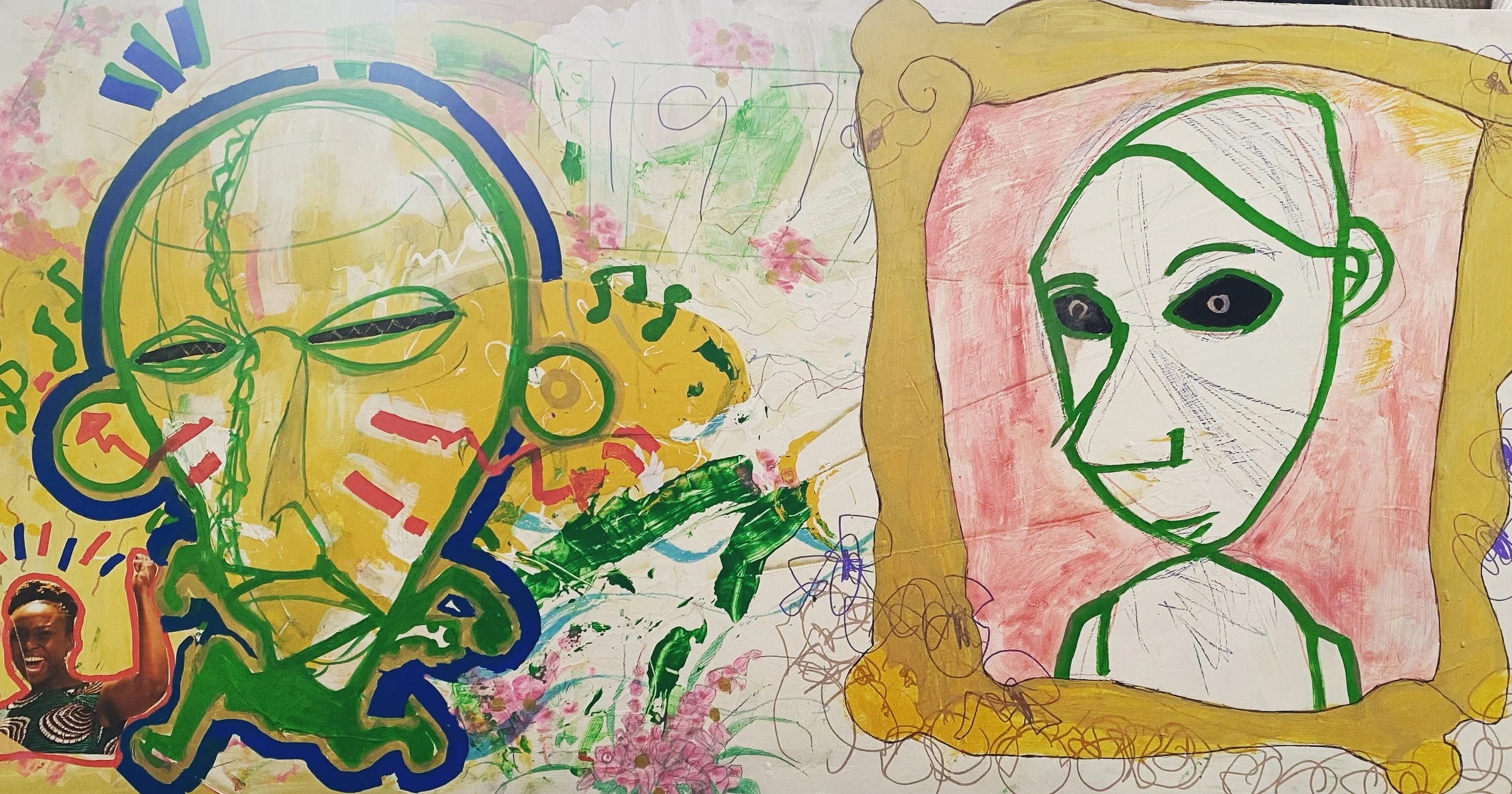What makes the piece compelling is its tension: one side ecstatic, noisy, defiant; the other reserved, eerie, contemplative. The floral motifs that wander across both halves serve as a fragile connective tissue, softening the rupture while reminding us of cycles of growth and decay. The overall effect is that of a cultural palimpsest—personal history, collective struggle, and art historical lineage colliding in one surface.
This is a work that does not settle into one mode. It insists on its contradictions: celebration and haunting, figuration and abstraction, immediacy and reflection. In doing so, it asks viewers not to choose between them, but to dwell in the unsettled space where identities, histories, and aesthetics overlap.
